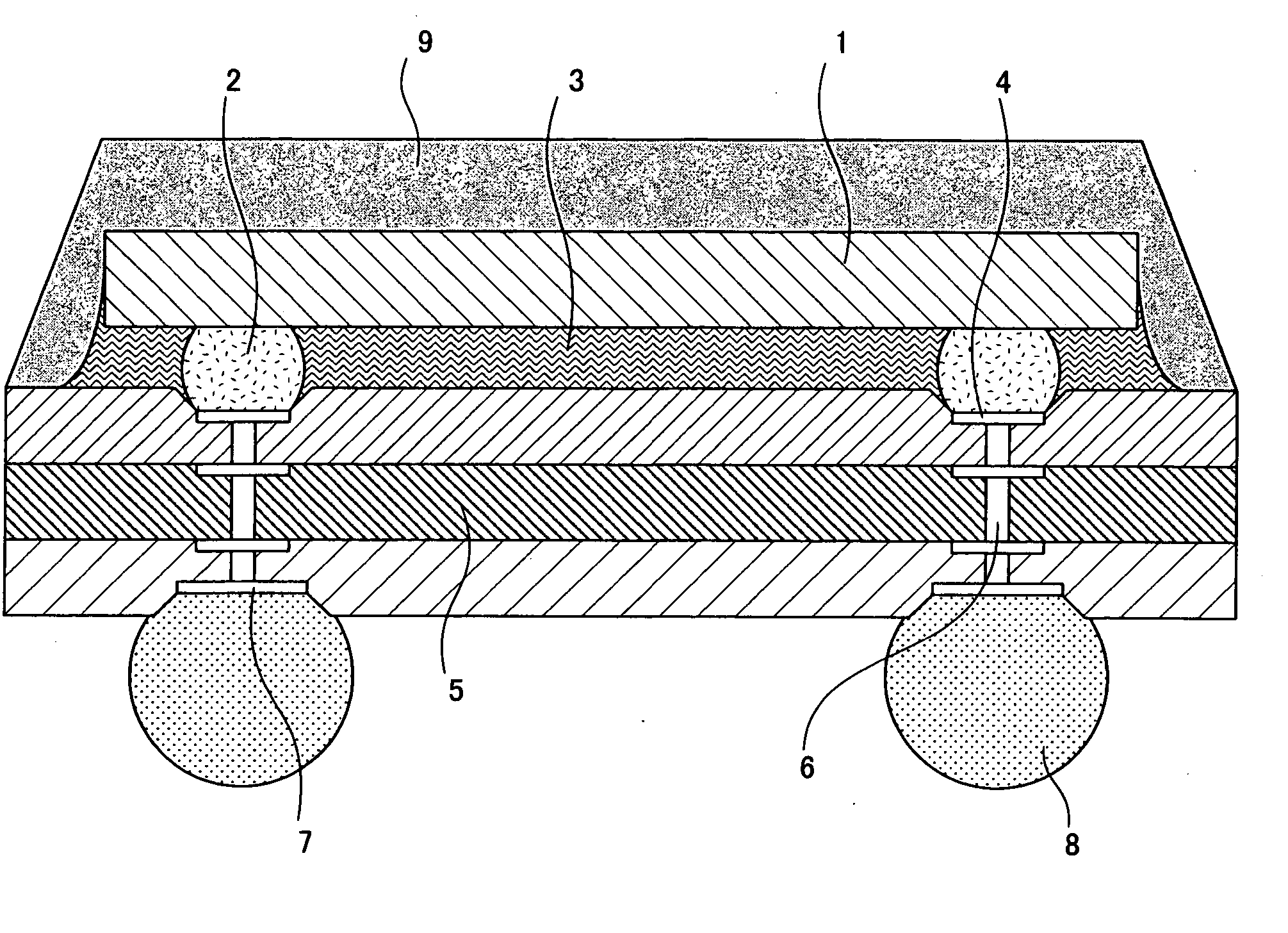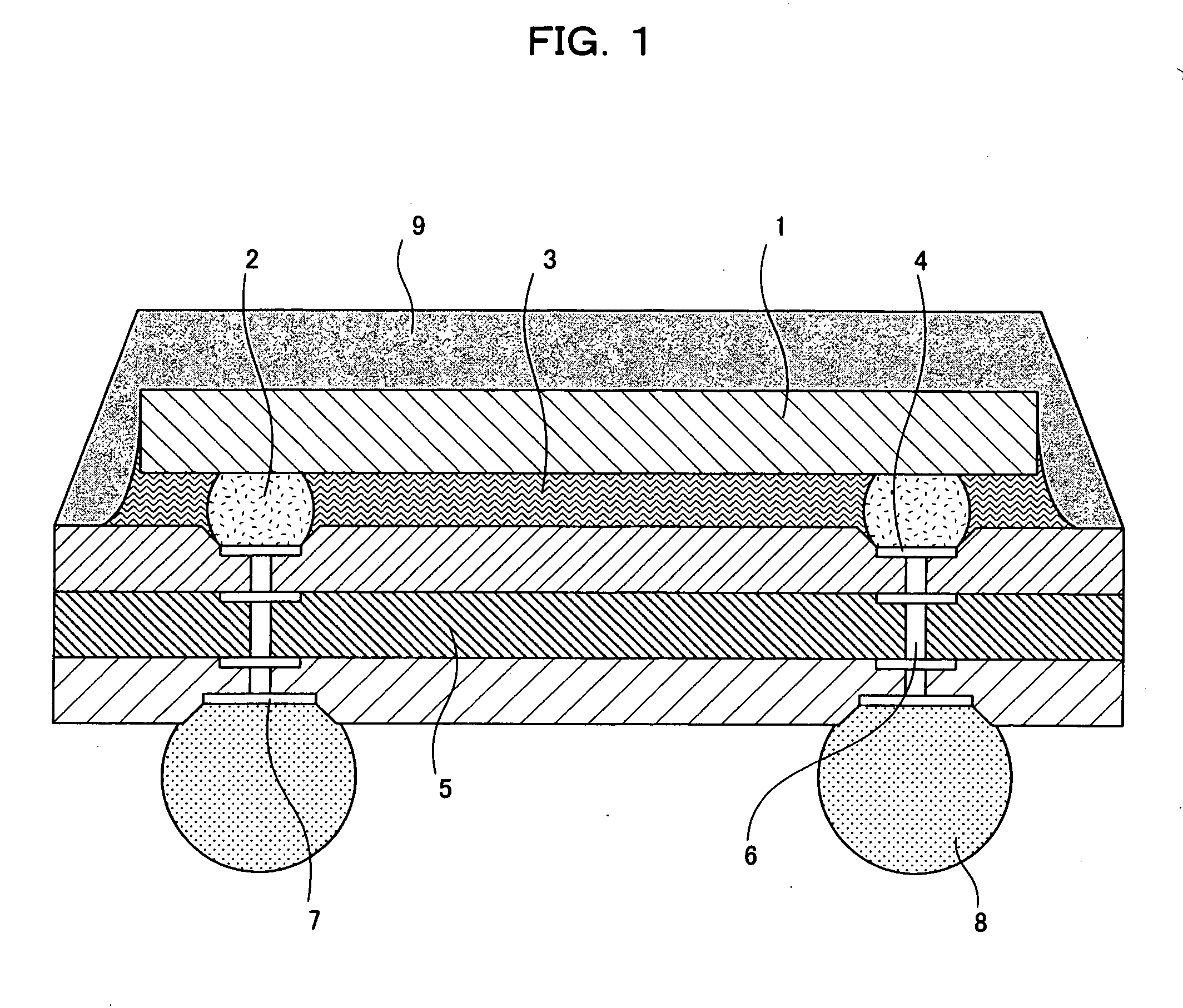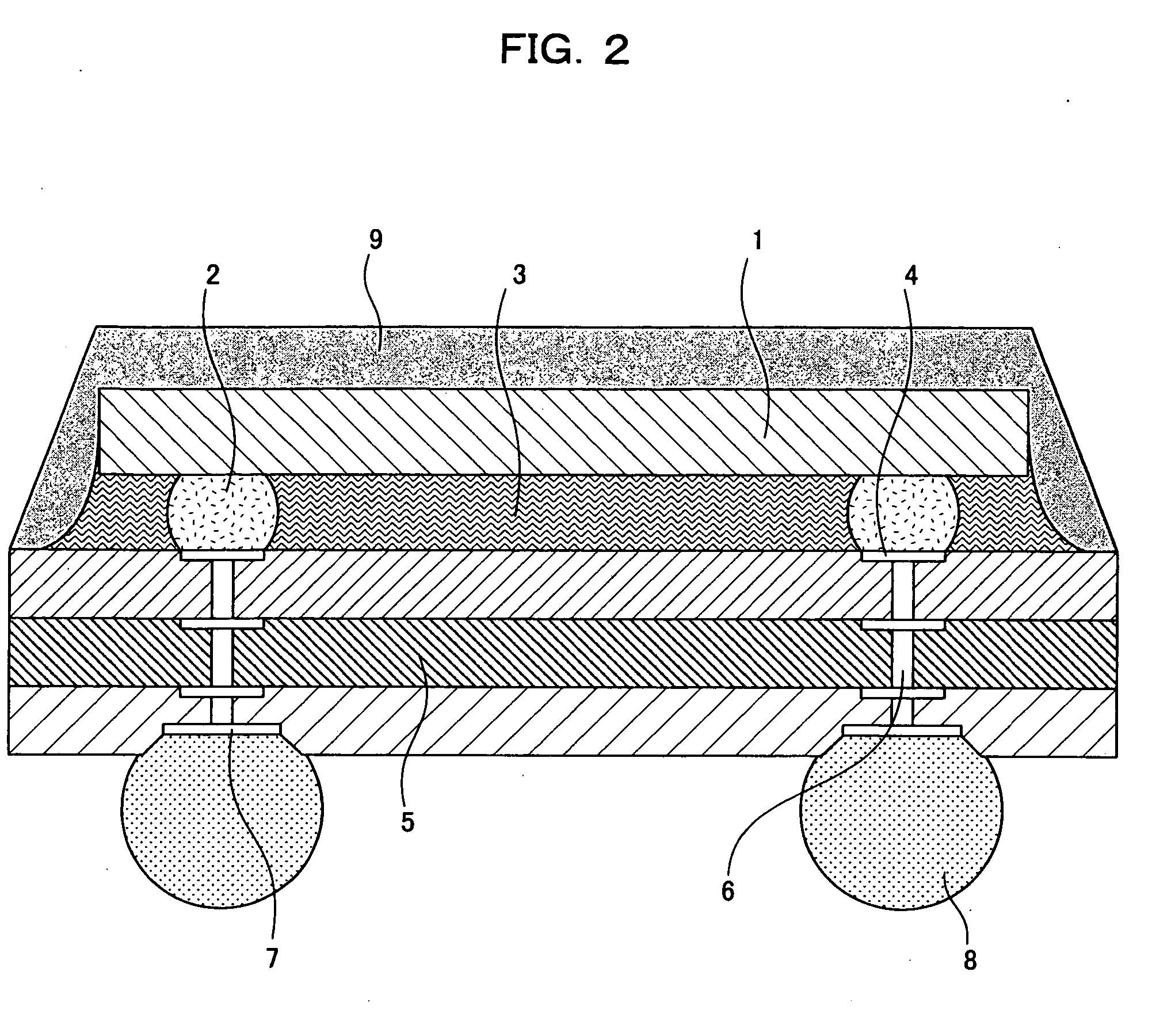Semiconductor device and semiconductor device production method
a semiconductor device and semiconductor technology, applied in the direction of semiconductor devices, semiconductor/solid-state device details, printed circuits, etc., can solve the problems of difficult design of semiconductor devices, difficult to provide the planarity required for reliable electrical connections, and increase the possibility of poor connection, so as to reduce the requirement for the connection terminal of semiconductor elements and increase the planarity of the board. , the effect of increasing the planarity
- Summary
- Abstract
- Description
- Claims
- Application Information
AI Technical Summary
Benefits of technology
Problems solved by technology
Method used
Image
Examples
embodiment 1
[0051]FIG. 1 is a sectional view illustrating the construction of a semiconductor device according to Embodiment 1 of the present invention. As shown in FIG. 1, no solder resist is provided on front and rear major surfaces of a board 5, and the board 5 includes connection electrodes 4 respectively provided in recesses formed in one major surface thereof, and external electrodes 7 respectively provided in recesses formed in the other major surface thereof. The board 5 further includes vias 6 provided therein and respectively electrically connecting the connection electrodes 4 to the external electrodes 7, and external terminals 8 are respectively provided on the external electrodes 7.
[0052] The depth of the connection electrodes 4 as measured from the one major surface of the board 5 to the surfaces of the connection electrodes 4 and the depth of the external electrodes 7 as measured from the other major surface of the board 5 to the surfaces of the external electrodes 7 are desirab...
embodiment 2
[0066]FIG. 2 is a sectional view illustrating the construction of a semiconductor device according to Embodiment 2 of the present invention. In FIG. 2, connection electrodes 4 are provided in one major surface of a board 5 with their surfaces being flush with the one major surface. External electrodes 7 are respectively provided in recesses formed in the other major surface of the board 5.
[0067] The depth of the external electrodes 7 as measured from the other major surface of the board 5 to the surfaces of the external electrodes 7 is desirably not smaller than 10 μm, which is substantially equal to the thickness of a solder resist layer which would otherwise be provided on the other major surface. The other arrangement of Embodiment 2 is the same as in Embodiment 1, and will not be described in detail.
[0068] With this arrangement, the external electrodes 7 are respectively provided in the recesses formed in the other major surface of the board 5. Therefore, where the external te...
embodiment 3
[0071]FIG. 3 is a sectional view illustrating the construction of a semiconductor device according to Embodiment 3 of the present invention. In FIG. 3, connection electrodes 4 are respectively provided in recesses formed in one major surface of a board 5. The depth of the connection electrodes 4 as measured from the one major surface of the board 5 to the surfaces of the connection electrodes 4 is desirably not smaller than 10 μm, which is substantially equal to the thickness of a solder resist layer which would otherwise be provided on the one major surface.
[0072] External electrodes 7 are provided in the other major surface of the board 5 as being exposed from openings formed in a solder resist 10 formed on the other major surface of the board 5. The surfaces of the external electrodes 7 are flush with the other major surface of the board 5. The other arrangement of Embodiment 3 is the same as in Embodiment 1, and will not be described in detail.
[0073] In the semiconductor devic...
PUM
 Login to View More
Login to View More Abstract
Description
Claims
Application Information
 Login to View More
Login to View More - R&D
- Intellectual Property
- Life Sciences
- Materials
- Tech Scout
- Unparalleled Data Quality
- Higher Quality Content
- 60% Fewer Hallucinations
Browse by: Latest US Patents, China's latest patents, Technical Efficacy Thesaurus, Application Domain, Technology Topic, Popular Technical Reports.
© 2025 PatSnap. All rights reserved.Legal|Privacy policy|Modern Slavery Act Transparency Statement|Sitemap|About US| Contact US: help@patsnap.com



